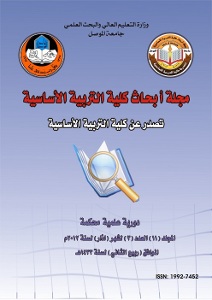Synthesis, Characterization and Antibacterial activity Evaluation of Some Complexes Derived From 4-(4-(dimethyl amino) benzylidene) hydrazono) methyl)-2-methoxyphenol Ligand.
Abstract
This work involves the synthesis of new complexes from metal ions Co (II), Ni (II), Cu (II), and Zn (II) with 4-(4-(dimethyl amino) benzylidene) hydrazono) methyl)-2-methoxyphenol ligand (LN) in a molar ratio [1:2] metal: ligand. The complexes were characterized based on Elemental analysis, IR, UV-Vis, molar conductivity, magnetic susceptibility, XRD, molar conductance, magnetic moment measurement, and powder X-ray diffraction. Infrared data suggest that the ligand (LN) behaves as a monodentate ligand and coordinates through (N) as a donor, forming a sequence towards the metal ions. The LN gives an octahedral shape, and the ligand was characterized using IR, 1H, and 13CNMR. Finally, some of these prepared complexes were screened for their antibacterial activities against two classes of pathogenic bacteria: Gram-positive and Gram-negative bacteria. The results show that the metal complexes have a greater essential action compared to the free ligand.The results show that the metal complexes have a greater essential action compared to the free ligand.
